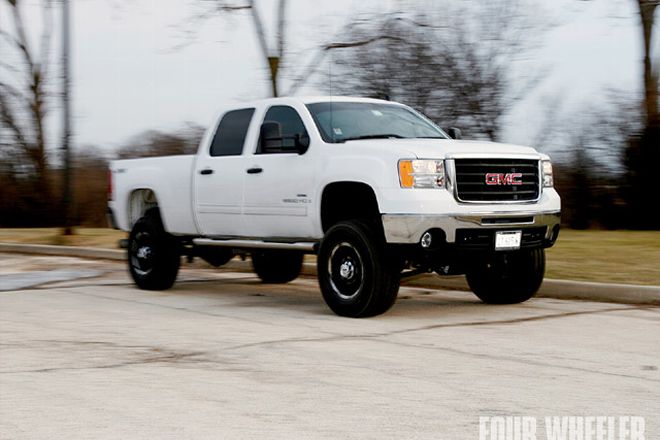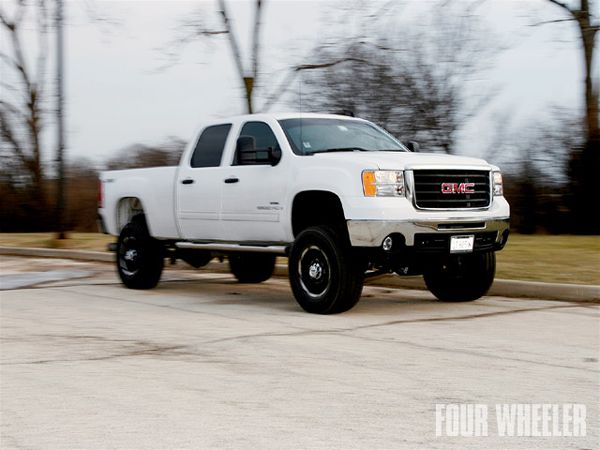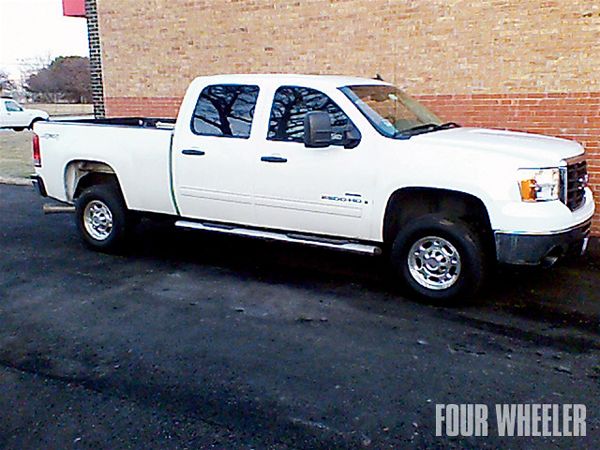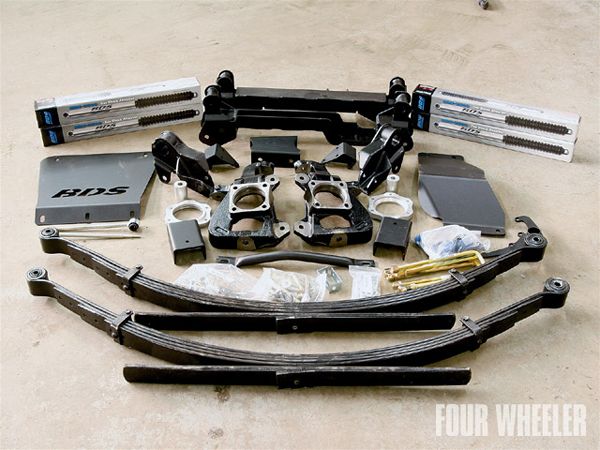
 Ken Brubaker
Senior Editor, Four Wheeler
Ken Brubaker
Senior Editor, Four Wheeler


Ground clearance is one of the important pieces of the puzzle when it comes to creating an off-highway-friendly four-wheel-drive vehicle, and BDS Suspension has addressed ground clearance with their new 7-inch "High Clearance" kit for the IFS 2001-'08 Chevy/GMC 2500 HD pickups.
 Here's the BDS '01-'08 Chevy/GMC 2500 HD 7-inch suspension as delivered. The kit we installed included new rear leaf springs. There's also another kit available that lifts the rear of the vehicle via lift blocks.
Here's the BDS '01-'08 Chevy/GMC 2500 HD 7-inch suspension as delivered. The kit we installed included new rear leaf springs. There's also another kit available that lifts the rear of the vehicle via lift blocks.
This kit not only addresses raising the vehicle's height to improve ground clearance, but it also includes crossmembers that are designed with higher clearance than most. The kit also includes unique brackets that eliminate the need to lower the torsion bars to compensate for the increased front suspension lift. BDS says that this prerunner-inspired system offers more ground clearance than anything on the market. They also note that the entire geometry of the system was created around the design that eliminates the need to drop the torsion bars. All told, it took two years of long-term testing before BDS started producing this kit.
We had the opportunity to travel to Attitude Performance in Arlington Heights, Illinois, and watch as technician Alex Clark installed the system under a customer's GMC. Here's how the kit we installed does what it does. Don't have a GM truck? Well, BDS also offers a High Clearance kit for the '09 Ford F-150. Kits for the 2004-'08 F-150 and 2006-'09 Dodge trucks are forthcoming.
By The Numbers
So what are the real-world results? The answer to that question lies here, with measurements taken before and after the install (very unscientifically with a tape measure and an angle finder).
Measurement Stock Modified Change Ground to rear bumper 20.5 in 26.0 in +27% Ground to front bumper 12.0 in 23.5 in +96% Ground to front differential* 9.5 in 13.0 in +37% Ground to transmission crossmember 9.5 in 18.5 in +95% Angle of approach 27.1 deg 45 deg +66% Angle of departure 25 deg 36 deg +44%
*Measurement includes new skidplate
Bottom Line
Before and after the install we RTI'd the truck on our 20-degree ramp. Before the install, the truck traveled 40.25 inches up the ramp to earn a score of 263. After the install (Photo A), the truck traveled 50 inches up the ramp to earn a score of 327. This represents a 24 percent improvement in RTI score.
There are many things to like about this kit. In Photo B you can see the clearance provided by the new front suspension crossmembers is impressive. In addition, the generous skidplating protects the underbody and front diff. The design of the kit also eliminates the need for protruding compression struts. Also impressive is the fact that the kit solves the problem of low-hanging torsion bars with the unique torsion bar brackets that mount securely to the lower control arms. Photo C shows a side view of how the torsion bars remain in the stock position after the install.
BDS says that for the new body-style GM trucks the kit is designed for a maximum tire size of 35x12.50 on a 20x9 wheel with 5.75-inch backspacing or a 35x13.50 tire on 17x9 wheel with 5.5-inch backspacing. The owner of this rig chose to run LT235/65R18 tires.
At the time this story was written the kit has an MSRP of $2,681.21 (includes the No Fine Print" warranty).





















